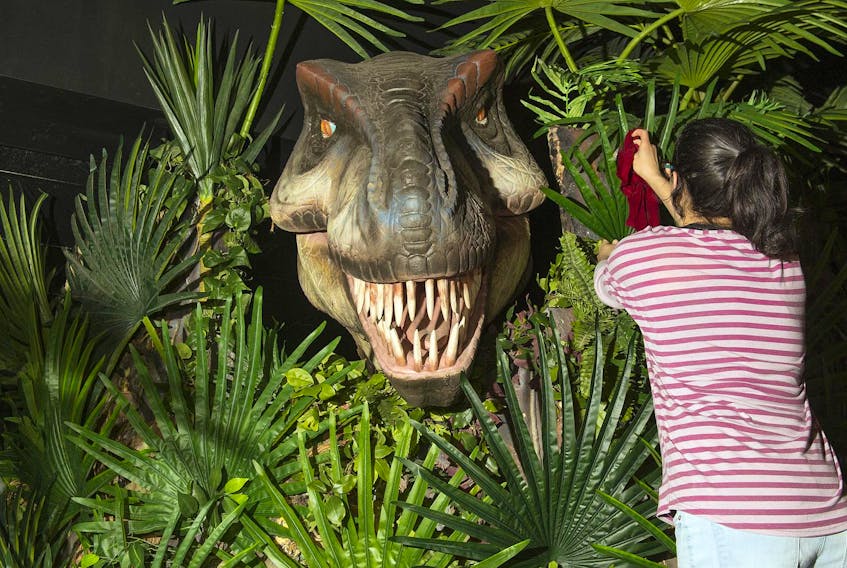No big deal or anything, but Canada, the world’s largest T. rex was discovered in Saskatchewan. Yep, you read that right: Saskatchewan!
The behemoth weighed a whopping 19,500 pounds, according to National Geographic, and was found near Eastend, about 380 km southwest from Regina.
Nicknamed “Scotty,” the dinosaur is much bigger and older than what paleontologists previously believed the species could grow. Of all recovered T. rex skeletons, Scotty is the most mature.
Until Scotty’s discovery, Sue was the largest T. rex. Researchers estimated Sue weighed about 800 pounds less than Scotty.
Sue still is the most complete fossil, with around 90 per cent of her bones unearthed in 1990 in South Dakota. Researchers could only recover about 65 per cent of Scotty’s skeleton, but that’s still a substantial amount, the study’s lead researcher said.
Both, however, lived to at least 28 years old — seniors in terms of tyrannosaurs — but Scott Persons, the lead researcher, said Scotty could well be into his early 30s. Scotty’s find tells the scientific community that the T. rex could have lived longer and been heavier than what was paleontologists previously surmised.
“Scotty pushes the extremes for the species,” Persons said. “Scotty’s bones are longer and larger than Sue’s, so just calculating the weight of the bones, Scotty is already bigger.
Living to a ripe, old age some 68 million years ago, Scotty’s skeleton gives scientists insight into the life the dinosaur led. In the sub-tropical coastal climate, he suffered from injuries such as a broken and healed rib, a dental infection and may have got into a scuffle with a fellow T. rex — a few tailbones were broken.
Scotty has been known to scientists since 1991, but it’s taken more than two decades to dig the creature from the Earth because its bones were cemented into the hard rock, making it hard to extract.
When the fossils were discovered, the scientists wanted to celebrate with a toast. The only drink they had on hand, however, was scotch — hence Scotty’s nickname.
Scotty’s femur gives researchers key insight into how big the dinosaur was when alive. “By studying many living animals, scientists have found that the wider an animal’s femur, the more weight that the bone tends to hold up,” the National Geographic reported. The Saskatchewan dinosaur’s femur was eight inches wide, which suggests a body weight of 19,500 pounds.
The findings about Scotty were published in The Anatomical Record.
By Bianca Bharti
Copyright Postmedia Network Inc., 2019









